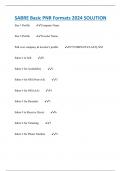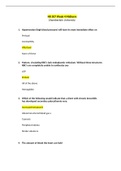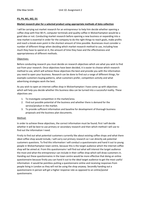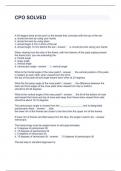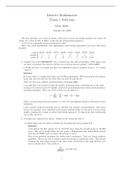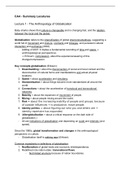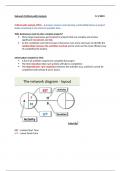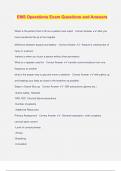the world’s leading publisher of
Open Access books
Built by scientists, for scientists
5,200
Open access books available
128,000
International authors and editors
150M Downloads
Our authors are among the
154
Countries delivered to
TOP 1%
most cited scientists
12.2%
Contributors from top 500 universities
Selection of our books indexed in the Book Citation Index
in Web of Science™ Core Collection (BKCI)
Interested in publishing with us?
Contact
Numbers displayed above are based on latest data collected.
For more information visit www.intechopen.com
,Chapter
Principles of Chromatography
Method Development
Narasimha S. Lakka and Chandrasekar Kuppan
Abstract
This chapter aims to explain the key parameters of analytical method develop-
ment using the chromatography techniques which are used for the identification,
separation, purification, and quantitative estimation of complex mixtures of
organic compounds. Mainly, the versatile techniques of ultra−/high-performance
liquid chromatography (UPLC/HPLC) are in use for the analysis of assay and
organic impurities/related substances/degradation products of a drug substance
or drug product or intermediate or raw material of pharmaceuticals. A suitable
analytical method is developed only after evaluating the major and critical separa-
tion parameters of chromatography (examples for UPLC/HPLC are selection of
diluent, wavelength, detector, stationary phase, column temperature, flow rate,
solvent system, elution mode, and injection volume, etc.). The analytical method
development is a process of proving the developed analytical method is suitable
for its intended use for the quantitative estimation of the targeted analyte present
in pharmaceutical drugs. And it mostly plays a vital role in the development and
manufacture of pharmaceuticals drugs.
Keywords: analytical method development, ultra performance liquid
chromatography (UPLC), high-performance liquid chromatography (HPLC), assay,
impurities, impurity profiling study, forced degradation study
1. Introduction
It is well known that chromatography is a laboratory technique used for separation
and quantification of complex organic mixtures which cannot be separated effectively
by other purification techniques. The constituents of a mixture dissolved in solvent
get separated gradiently according to their affinities to the stationary phase with
the help of mobile phase one after another. Chromatography is invented by Mikhail
Semenovich Tswett in 1903 during his research on plant pigments such as chlorophylls,
xanthophylls, and carotenoids [1] which got extended for analyzing organic mol-
ecules of different kinds especially pharmaceutical from the year 1920 [2]. Invention
of chromatography made the jobs of organic chemist and the whole industry relying
on them especially pharma industry easier. Keeping in mind the various fields where
this technique has been used, this chapter focuses on the use of chromatography in
pharmaceuticals for separating the drug (API) mixture in particular.
Nowadays, many different kinds of chromatography techniques, such as thin-
layer chromatography (TLC), paper chromatography, and liquid chromatography
(e.g., HPLC, UPLC, and preparative HPLC), supercritical fluid chromatography,
and gas chromatography (GC)) have been designed and utilized for the separation
, Biochemical Analysis Tools - Methods for Bio-Molecules Studies
and purification of pharmaceutical drugs [3]. In this chapter, the authors discuss
the principles for chromatography method development using ultra/high-perfor-
mance liquid chromatography (UPLC/HPLC) techniques for the analysis of assay
and organic impurities/related substances/degradation products of pharmaceuticals
(any drug product/drug substance/intermediate/raw material of pharmaceuticals).
These techniques are developed substantially as a result of the work of Archer John
Porter Martin and Richard Laurence Millington Synge during the 1940s and 1950s, for
which they won the 1952 Nobel Prize in Chemistry [4]. Commonly used character-
izing technique in pharma industry is liquid chromatography (e.g., HPLC, UPLC,
and LC–MS). Each one varies in the stationary phase and operational conditions.
HPLC and UPLC can be used as a quantitative technique if coupled with a mass
detector (MS) to elucidate the structure of the molecule and quantification.
In pharma industry specific, stability-indicating HPLC/UPLC methods have to
be developed to estimate the assay and to quantitatively determine the impurities of
new drug substances and drug products [5]. Assay is a quantitative test of a sub-
stance to determine the amount of an individual components present in it. Impurity
is an unknown component of drug substance that is not the chemical entity. Assay
and impurity tests are major and critical quality attributes of the pharmaceutical
dosage forms which help to check and ensure the quality, safety, and efficacy of
drug substances and drug products. This chapter will discuss the various param-
eters that have to be chosen to run the chromatography in order to have a better
separation and maximum purity. The process of changing the conditions in order
to design a best method run for a particular drug mixture or compound is called the
analytical method development.
2. Analytical method development
Analytical method development is a process of proving that the developed
chromatography method is suitable for its intended use in the development and
manufacturing of the pharmaceutical drug substance and drug product. The basic
separation techniques and principles involved in the analytical method develop-
ment using the HPLC and UPLC are listed as follows:
• Selection of chromatography mode
• Selection of detector
• Selection of column (stationary phase)
• Selection and optimization of mobile phase
○ Buffer and its strength
○ pH of buffer
○ Mobile-phase composition
• Selection of organic modifiers
• Selection of ion-pair reagents
• Selection of flow rate

